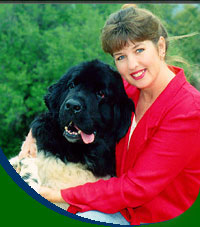 |
 |
|||||||||||||
|
|
||||||||||||||
|
Species-Appropriate Food for Cats by Kymythy R. Schultze So, what’s the big
deal about food?
Why does it have such a huge influence on a body’s health? Well,
simply put,
food is body-fuel. It nourishes each and every cell in the body and
creates the
energy necessary for life to happen. It’s an overly simplified
analogy, but
food is to living beings like gas is to cars. If you put the wrong type
of gas
in a car, it won’t run well. But if you put in the correct fuel
for that car, it
runs better. Next to air, food is the
substance
our cats take into their bodies most often. How long they live, their
quality
of life, the health of their immune system, and their behavior all
depend
greatly on the food they eat. Food is the foundation for health.
It’s really no
different than what we hear today about human health. The experts keep
telling
us that if we wish to live a long healthy life, we need to eat more
fresh real
food and cut out the processed food products. It seems that every day
brings
new research to support this advice. As both humans and felines have
strayed
from eating fresh foods, both our species have suffered a huge increase
in
disease; obesity, diabetes, allergies, cancer, behavior problems, and
more. These days, there are so
many bottles
of nutritional “supplements” on the market and so many
processed fake foods
that perhaps we’ve forgotten that real fresh food is the original
and best
source of all those vitamins, minerals, enzymes, antioxidants, and
other
important nutrients necessary for good health. Even in our modern day,
malnutrition is still a very real issue for cats (and humans).
Malnutrition
puts a great deal of stress on the body and lowers the energy needed to
maintain good health. Malnutrition may be caused by lack of food, poor
quality
food, or food cats cannot utilize if it’s not appropriate for
their species Felis domesticus. Food Fit for a Cat When you have the chance,
take a good
look at your cat. It has needle-sharp teeth and claws meant to catch,
hold, and
tear flesh. It has ears that face forward and eyes in the front of its
head to
better focus on that mouse or bird it wants to chase. That mouse or
bird is
built differently, being a prey animal, they usually have eyes more to
the side
of their heads to better see who’s trying to make them into
lunch! Your cat’s
digestive system is brilliantly designed to eat specific foods.
It’s short and
acidic; proper foods are utilized swiftly and efficiently. That
snuggly-wuggly
kitty in your house is a well-developed predator. Officially, the cat is a
carnivore.
In fact, your cat is actually an obligatory
carnivore, which means it must eat meat. Just because it resides in
your home
and enjoys your company doesn’t change its physical make-up and
its nature.
Obviously, it should not eat the same food as a cow or a chicken
because that’s
not how its body is designed. Cows and chickens are herbivores and are
structurally quite different from your cat. Now, I’m not saying
that you must
place a live mouse in your cat’s dinner bowl (although some cats
would love
it), but we do need to feed our cats as closely as we can to what they
were
built to eat. That’s the responsible thing to do when
you’ve chosen to live
with a carnivore. Your feline friend’s health will benefit
greatly if you keep
its natural dietary needs in mind when reading product labels or
choosing what
type of food to put in its dish. Kymythy Schultze has been a trailblazer in animal nutrition for over two decades. She is also a human nutritionist and has helped thousands of people and their pets live happier, healthier lives. To learn how to easily prepare healthy meals for dogs, cats, and humans, check out her best-selling books: “Natural Nutrition for Dogs and Cats: The Ultimate Diet.”, “The Natural Nutrition No-Cook Book: Delicious Food for You…and Your Pets!” and her new book "Natural Nutrition fot Cats: The Path to Purr-fect Health" Visit her website at www.kymythy.com |
|||||||||||||
|
© 2008 Kymythy R. Schultze |
||||||||||||||


